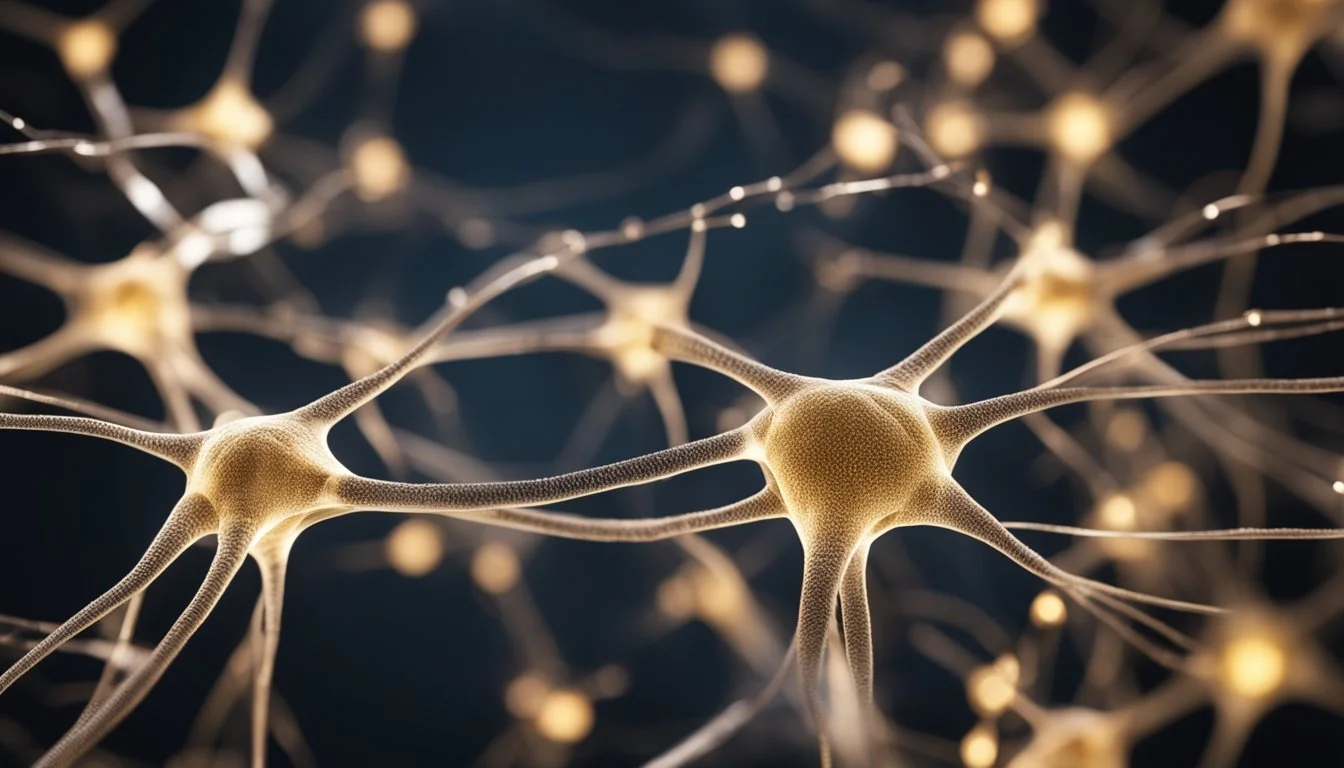6 Documentaries That Discuss the Science of Habit Formation
Insights into Behavioral Change
Understanding the science of habit formation can offer profound insights into how behaviors are developed and maintained over time. Habits play a crucial role in personal development and well-being, making it vital to explore how they are formed, maintained, and sometimes broken. Documentaries on this subject provide valuable perspectives, allowing viewers to grasp the principles of habit formation and apply them to their own lives.
By examining various approaches and scientific findings, these documentaries shed light on the mechanisms behind habit formation and elimination. Viewers can gain knowledge on how the brain's neuroplasticity works to support or hinder the development of habits. With these insights, individuals are better equipped to build positive routines and achieve long-term behavioral changes.
1) "Atomic Habits" by James Clear (2018)
"Atomic Habits" by James Clear is a comprehensive exploration of how small changes can yield significant outcomes. The book highlights the powerful influence of environment on human behavior, often surpassing the effects of willpower. James Clear uses the compelling case of Dr. Anne Thorndike's work at Massachusetts General Hospital to illustrate these principles. More Information on Wikipedia
Clear delves into the mechanics of habit formation, employing concepts like the habit loop, which includes cue, craving, response, and reward. By understanding these elements, individuals can strategically develop positive habits and eliminate detrimental ones. The author provides a practical framework for creating effective habits that can be implemented in daily life.
2) "The Power of Habit" by Charles Duhigg
"The Power of Habit" (2012) delves into the intricate science behind habit formation and transformation. Based on Charles Duhigg's best-selling book, the documentary offers a comprehensive view of how habits shape individual behaviors and societal patterns. Through a series of engaging narratives and expert interviews, it explores the fundamental elements of habit loops, cues, and rewards. More information.
The film illustrates the pivotal role of understanding habits in various aspects of life, including personal growth, business, and community dynamics. It emphasizes the neurological underpinnings that dictate routine actions and how these can be harnessed for positive change. This insightful documentary sheds light on the power of belief and repetition in breaking unwanted habits and fostering new, beneficial ones.
3) "Hooked: How to Build Habit-Forming Products" by Nir Eyal (2014)
"Hooked: How to Build Habit-Forming Products" explores the four-step Hook Model designed by Nir Eyal to create products that encourage user engagement through habit formation. The book breaks down how successful products use this model to subtly guide user behavior and achieve long-term retention.
Eyal illustrates the Hook Model using four stages: Trigger, Action, Variable Reward, and Investment. This process is central to understanding how to build products that customers repeatedly use.
The book is targeted at product managers, designers, marketers, and entrepreneurs who seek to leverage behavioral psychology in product development. Eyal draws on his experiences in video gaming and advertising to provide practical steps for creating engaging, habit-forming products.
Notably, it addresses the importance of balancing product utility with ethical considerations to avoid negative user impacts. Eyal also engages readers with insights gained from his teaching roles at Stanford and industry conferences.
More about "Hooked: How to Build Habit-Forming Products" on Wikipedia
4) "Mindset: The New Psychology of Success" by Carol S. Dweck
"Mindset: The New Psychology of Success" is a popular book by Carol S. Dweck that offers impactful insights relevant to the science of habit formation. This book introduces the concept of "growth mindset," which suggests that abilities and intelligence can be developed through dedication and hard work.
Dweck explores the implications of mindset on personal and professional development. She argues that adopting a growth mindset leads to resilience when facing challenges and fosters a love for learning. This idea aligns with habit formation, as a growth mindset encourages the consistent pursuit of positive behaviors.
Carol Dweck's research underscores the role of mindset in achieving long-term success. She highlights how a fixed mindset—believing that qualities are static—can hinder personal growth and limit one's potential. This perspective is transformative in understanding why some habits are harder to build or change than others.
For more information about the book, visit Wikipedia.
5) "Habit Hacks: Reach Synergy by Optimizing the DUFF" by James Sutton (2023)
"Habit Hacks: Reach Synergy by Optimizing the DUFF" by James Sutton explores the intricacies of habit change through the DUFF framework—Desire, Understanding, Feedback, and Focus. James Sutton unpacks how these components interact to form lasting habits and explains practical methods for leveraging this framework to achieve personal and professional growth.
The documentary features interviews with leading behavioral scientists and psychologists, offering evidence-based insights into the mechanisms that drive human behavior. Through expert analysis and real-world examples, viewers gain a comprehensive look at how minor adjustments in routine can lead to substantial changes over time.
Sutton's film bridges science and practice, illustrating the necessity of both knowledge acquisition and experiential learning in habit formation. While he examines the neurological underpinnings of habits, the emphasis is placed on actionable strategies that viewers can implement in their daily lives.
The documentary also emphasizes the role of social and environmental factors in habit formation. By analyzing these elements, Sutton provides a holistic approach that encourages viewers to modify not just their habits but also their surrounding environments for optimal results.
For detailed information on the documentary and its insights, visit IMDb or Wikipedia.
6) "The Habit Blueprint" by Patrik Edblad
"The Habit Blueprint" by Patrik Edblad is a valuable resource for understanding the science and mechanics behind habit formation. The book offers a concise, research-based guide that breaks down the process of behavior change.
Edblad's approach focuses on practical steps, making it accessible and easy to follow. Readers are guided through 15 steps designed to help them establish and maintain habits effectively. This method emphasizes simplicity and consistency, which are key elements for lasting change.
While some books on habits delve into complex theories, Edblad's work stands out for its straightforward and actionable advice. The book not only provides insights into starting new habits but also addresses common challenges people face when trying to sustain them.
For more information on Patrik Edblad's work and "The Habit Blueprint," visit Goodreads.
The Science Behind Habit Formation
Understanding how habits form and solidify in the brain involves exploring neural pathways and the influence of chemicals like dopamine. By examining these elements, insights into automatic behavior patterns can be gained.
Neural Pathways and Habit Loops
Neural pathways are networks in the brain that are shaped by repetition and influence behavior. When an action is repeated regularly, the brain gradually requires less conscious effort to initiate the same behavior. This process forms what is known as a habit loop, which consists of a cue, routine, and reward.
The cue triggers the brain to engage the routine, leading to a reward that signals the brain to remember the loop in the future. Over time, this cycle strengthens, decreasing the need for deliberate thought and increasing automaticity in responses. The brain then efficiently allocates resources, allowing individuals to perform habitual actions with ease.
The Role of Dopamine
Dopamine, a neurotransmitter, plays a significant role in reinforcing habit formation. When an action yields a rewarding outcome, dopamine levels increase, which enhances learning and motivation. This chemical signal strengthens the connection between the cue and the reward, embedding the habit in memory.
Moreover, dopamine drives anticipation and engagement with behaviors associated with rewards, bolstering repetition. It influences cravings and desires, often making the reward-seeking process more compelling. This association aids in understanding why some habits become long-lasting and automatic. As dopamine levels reinforce these responses, habits can become deeply rooted, impacting daily routines and behaviors.
Impact of Habits on Daily Life
Habits shape individual's daily routines, either enhancing or hindering productivity, health, and well-being. While positive habits elevate daily functioning, negative habits can impede progress. Building new habits often presents challenges, such as breaking old patterns and remaining consistent.
Positive and Negative Habits
Positive habits streamline daily routines and improve efficiency. Regular exercise, for instance, contributes to physical fitness and mental clarity. Another example is reading daily, which can expand knowledge and enhance cognitive function over time.
Conversely, negative habits can disrupt daily activities. Procrastination often results in stress and missed opportunities. Overeating or neglecting exercise can lead to health issues. Understanding the dual nature of habits helps individuals identify which behaviors to reinforce or modify.
Why Building New Habits Can Be Challenging
Building new habits involves repetition and patience. It requires consistent effort over time to embed a new behavior into daily life. The initial resistance to change is often strong, making the early stages of habit formation difficult.
Tools like habit tracking can aid in this process. Breaking the habit into smaller, achievable steps can reduce overwhelm and increase the likelihood of success. Moreover, replacing old habits with new ones requires intention and an understanding of the underlying triggers that sustain the unwanted behaviors.





